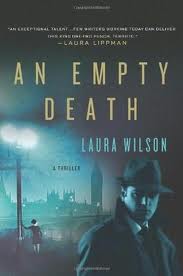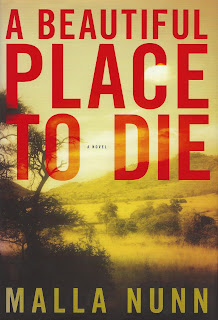I read thirteen books in July, many more than any other month this year. Some of them were short books. Also, a couple of books I had read parts of earlier in the year. But there were some longer books too. So I was surprised by how many books I read.
Nonfiction
My Bookstore: Writers Celebrate Their Favorite Places to Browse, Read, and Shop (2012) by Ronald Rice (Editor), Leif Parsons (Illustrator)
In this book about independent bookstores throughout the US, 84 authors have written essays about one bookstore that has been special for them. In some cases the reader learns more about the author also. Some were more interesting than others but any reader (at least in the US) would have some favorites.
Snippets of Serbia (2015) by Emma Fick
At Goodreads: "This is Emma Fick's illustrated journey through the weird, the fun and the unique adventures to be experienced across this small Balkan country." Her illustrations are lovely and personal. Some pages have a good bit of text, others just have titles, so it is a very quick read. She records various memories and experiences that she had on two visits to Serbia. Lots of pictures of food.
General Fiction
The Bookshop (1978) by Penelope Fitzgerald
Having never read anything by this author, I had no idea what to expect from this book. The cover led me to think this was a light-hearted book about a bookshop, and it wasn't that at all. I did give it a high rating, because I liked the writing and I think the author was expressing exactly what she wanted to, and did it well, but in the end it was too depressing for me. I do want to read more by this author.
How the Penguins Saved Veronica (2020) by Hazel Prior
The original title of this book was Away with the Penguins. I learned about this book from a booktube reviewer, Bookworm Adventure Girl, and I learned about the booktuber from Cath at Read-Warbler (see her review). The two main characters are a curmudgeonly old woman (Veronica, 86 years old) and her grandson Patrick, who she found only late in life. Veronica and Patrick both have poor social skills (that is putting it mildly), and they don't get along initially. Veronica takes a trip to Antarctica to spend time at a research station for penguins. I loved the book, every bit of it.
Fiction / Classic
The Great Gatsby (1925) by F. Scott Fitzgerald
This was the book I read for the latest Classic Club Spin. The story is told beautifully, and the buildup to the conclusion is done well, but I was disappointed in the book. My review here.
Historical Fiction
The English Wife (2020) by Adrienne Chinn
This was the second book I read for the Canadian Reading Challenge. The story covers three time periods: during World War II, in the UK and in Newfoundland; 2001, at the time of the 9/11 terrorist attacks, when many planes coming into New York were rerouted to Newfoundland; and ten years later in the town of Tippy's Tickle, Newfoundland. It was a very good read and I liked the ending. This book was recommended by Constance at Staircase Wit (review here), and she generously sent me her copy to read.
Crime Fiction
Murder on the Trans-Siberian Express (2001) by Stuart Kaminsky
This book is part of a series by Stuart M. Kaminsky, set in Russia under Communist rule (to begin with) and later in Russia, following the breakup of the USSR. I started reading the series in 2005 and now only have two books left to read. My review here.
In the Market for Murder (2015) by T. E. Kinsey
The premise of this series of mysteries, set in the early 1900's, is that Lady Hardcastle and her maid solve mysteries while living in the English countryside. The key is that the lady and her maid are more friends than employer and employee. I was ready for a cheerful, upbeat read and this was perfect. This is the second book in the series, and I am now reading the third, Death Around the Bend.
Box 88 (2020) by Charles Cumming
Charles Cumming is my latest favorite spy fiction author. (I have a lot of them.) Box 88 is a new series featuring Lachlan Kite, an agent for a covert spy agency. Kite is abducted, possibly by terrorists, after leaving the funeral of an old friend from boarding school. It turns out that the abduction is related to an event in the late 1980s when Lachlan was just out of boarding school, visiting his friend in France. At that time Lachlan began spying for the Box 88 group, and there are flashbacks to his introduction to the craft of spying. I loved this book.
Dead in the Water (1983) by Ted Wood
This was the second book I read for the Canadian Reading Challenge. My review here.
An Elderly Lady Must not be Crossed (2020) by Helene Tursten
This is a book of five short stories and one novella by the author of the Inspector Irene Huss series. Helene Tursten is Swedish, and the stories were translated by Marlaine Delargy. I reviewed the first five stories here and the novella, "An Elderly Lady Takes a Trip to Africa", here.
Vengeance (1999) by Stuart Kaminsky
Stuart Kaminsky is one of my favorite authors, due to his Inspector Rostnikov series set in Russia (see above). I had never tried his Lew Fonesca series set in Sarasota, Florida. Fonesca is not legally a private detective; he works as a process server. But in this book he takes on two cases: a runaway teenage daughter and a missing wife. I loved the book, and it is a plus that the writing style is entirely different from the Inspector Rostnikov series. There are five more in the series and I will be getting to the next one soon.
The Man from Berlin (2013) Luke McCallin
A historical mystery, set during World War II, in Sarajevo, Yugoslavia. The protagonist is Gregor Reinhardt, a German officer in counter-intelligence, stationed in Sarajevo during German occupation. Sarajevo is now the capital of Bosnia and Herzegovina, which shares a border with Serbia. Serbians are mentioned a lot in the book, so it was interesting to be reading it at the same time as Snippets of Serbia.
Currently reading
Death Around the Bend by T.E. Kinsey
Fifth Business by Robertson Davies
The Adventures of Sherlock Holmes by Arthur Conan Doyle
The photos at the top and bottom of this post are of Tibouchina heteromalla (Silver leafed Princess Flower) plants in our front flower beds. We have lovely flowers and foliage on these two plants this year. Photos taken and processed by my husband. Click on the images for the best viewing quality.
















.jpeg)

















